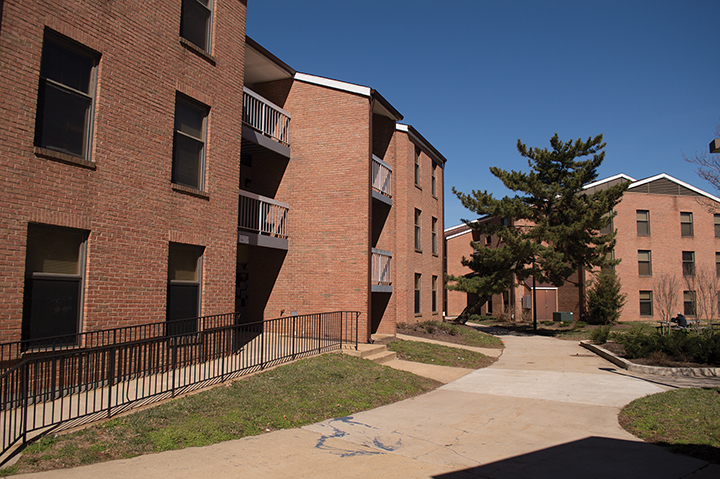Housing assignments for returning students have rebounded slightly for the fall after plummeting 22.3 percent entering the 2015-16 academic year, according to the Department of Resident Life.
The department assigned 4,173 returning students to on-campus resident halls this fall — a 6.2 percent jump from one year ago, according to department data. The 2015-16 plunge was a result of the University of Maryland’s push to house the entire Freshmen Connection program.
Leonardtown saw the largest percentage increase in housing assignments for this fall, jumping 45 percent. Resident Life put significant effort into marketing the Leonardtown Community this spring, after low demand from returning students in 2015 required the department to house 125 freshmen in the apartment-style complexes. Typically, the department tries to place first-year students in traditional-style halls.
Despite housing more returning students, the department anticipates they will need to assign even more Freshmen Connection students than last fall, said Scott Young, Resident Life associate director of administrative and business services.
“We housed Freshmen Connection students fully starting in 2015 and will continue this for 2016,” Young said. “For 2014 we housed about 450 Freshmen Connection students, for fall 2015, we housed 850 and for fall 2016 we expect to house over 1,000.”
Young said the department had additional space for first-year students this fall thanks to the reopening of Cambridge Hall, which created additional living space for returning students in other residence halls. The Cambridge Community lost 225 beds during the 2015-16 academic year when the hall was under renovation, he said.
Returning students were not assigned beds in Cambridge Hall, Young said.
Delays in the scheduled renovation of Dorchester Hall also provided Resident Life with more beds to work with, said Deborah Grandner, Resident Life director. Construction was supposed to have moved the Global Communities program to a different location for the 2016-17 academic year, but for now, the living-learning program is staying put — freeing up an additional 200 beds, she said.
“If Dorchester weren’t available, it would have cut into the options for a limited number of juniors,” Grandner told The Diamondback in February.
The majority of returning students — about 58 percent— will live in either the Denton Community or on South Hill next fall, according to Resident Life data. Denton Community assignments remained nearly the same, dropping less than 1 percent.
The South Hill Community saw a 9.8 percent boost in assignments this fall — which is the largest jump outside of Leonardtown. About 1,100 returning students will live on South Hill this fall.
Tom Beeson, a junior math major and current Kent Hall resident, said South Hill’s biggest perk is its location on the campus. The community is between McKeldin Mall and Route 1, which makes commuting from classes and engaging in social activities much easier than it would be on North Campus.
“Proximity to the South Campus Diner is a huge plus,” Beeson said. “The ability to crawl out of your suite in your slippers whenever you want can’t be overvalued, especially in poor weather.”
The room layouts in South Hill are also a plus, Beeson added. He said the suite-style quarters of Kent Hall are significantly better than his accommodations in Dorchester Hall last year.
“I prefer sharing a bathroom between four of us than using the communal bathrooms in [Dorchester Hall],” Beeson said. “My room in Kent looks less prison-like than the one I had in Dorchester, too.”
Many communities that saw significant changes in housing assignments in recent years are now leveling off, Young said. He said that has been the trend since 2015 with the focus on housing Freshmen Connection students.
In 2012, Oakland Hall was in its second year and housing assignments in the Denton Community topped 1,800. They currently sit at 1,290.
Similarly, following the construction of Prince Frederick Hall, housing assignments in the North Hill Community peaked at 911 returning students in 2014, according to department data. In 2015, the numbers dropped off to 729 and remain essentially the same for this coming fall at 730 assignments.
Even with the overall increase this year, returning student housing assignments are still 17.5 percent below their levels in 2014.
“As a housing program, we are gearing ourselves toward primarily first- and second-year students,” said Mike Glowacki, Resident Life assistant to the director. “That doesn’t mean we don’t want third- and fourth-year students, but the reality is there is a growing off-campus market that many upperclassmen are shifting to.”




